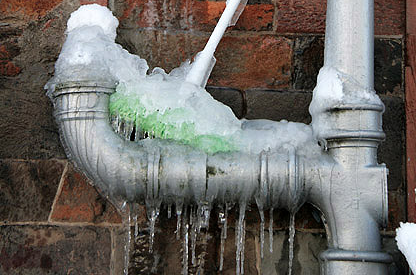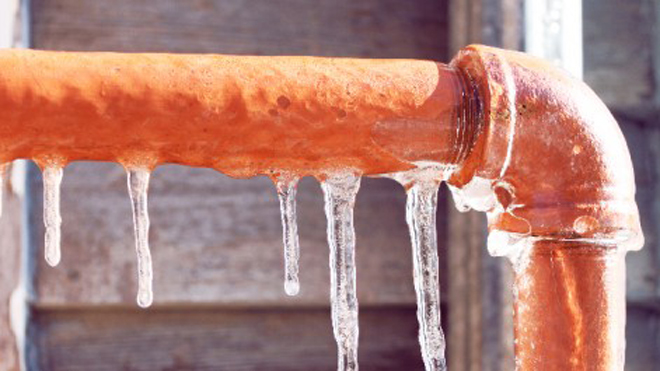Protecting Against Frozen Pipes in Winter: Expert Tips
Protecting Against Frozen Pipes in Winter: Expert Tips
Blog Article
How do you actually feel in regards to Winter Plumbing Precautions: Preventing Frozen Pipes?

Winter can damage your plumbing, especially by freezing pipelines. Here's exactly how to stop it from occurring and what to do if it does.
Intro
As temperature levels drop, the danger of icy pipes boosts, possibly bring about expensive repairs and water damages. Comprehending exactly how to stop frozen pipes is vital for homeowners in cool climates.
Recognizing Frozen Pipelines
What creates pipes to freeze?
Pipes freeze when subjected to temperatures listed below 32 ° F (0 ° C) for prolonged periods. As water inside the pipelines freezes, it broadens, taxing the pipeline walls and possibly creating them to break.
Threats and problems
Frozen pipes can cause supply of water disruptions, building damage, and costly repair work. Burst pipelines can flooding homes and trigger considerable architectural damage.
Indicators of Frozen Pipeline
Determining icy pipelines early can stop them from breaking.
Exactly how to determine frozen pipelines
Search for reduced water flow from faucets, unusual odors or noises from pipelines, and visible frost on subjected pipelines.
Prevention Tips
Protecting vulnerable pipes
Wrap pipes in insulation sleeves or use heat tape to protect them from freezing temperature levels. Concentrate on pipes in unheated or external areas of the home.
Heating techniques
Maintain interior areas properly warmed, particularly areas with pipes. Open up cabinet doors to allow cozy air to circulate around pipes under sinks.
Protecting Exterior Pipes
Yard tubes and outside faucets
Disconnect and drain garden tubes prior to winter. Set up frost-proof spigots or cover outside faucets with protected caps.
What to Do If Your Pipes Freeze
Immediate activities to take
If you think icy pipes, maintain taps open up to alleviate pressure as the ice melts. Use a hairdryer or towels taken in warm water to thaw pipelines slowly.
Long-Term Solutions
Structural modifications
Take into consideration rerouting pipelines far from exterior wall surfaces or unheated locations. Add extra insulation to attics, cellars, and crawl spaces.
Upgrading insulation
Invest in top notch insulation for pipes, attic rooms, and walls. Appropriate insulation helps preserve constant temperature levels and reduces the danger of frozen pipelines.
Conclusion
Preventing frozen pipelines needs positive actions and fast responses. By recognizing the causes, indications, and preventive measures, house owners can shield their plumbing throughout cold weather.
5 Ways to Prevent Frozen Pipes
Drain Outdoor Faucets and Disconnect Hoses
First, close the shut-off valve that controls the flow of water in the pipe to your outdoor faucet. Then, head outside to disconnect and drain your hose and open the outdoor faucet to allow the water to completely drain out of the line. Turn off the faucet when done. Finally, head back to the shut-off valve and drain the remaining water inside the pipe into a bucket or container. Additionally, if you have a home irrigation system, you should consider hiring an expert to clear the system of water each year.
Insulate Pipes
One of the best and most cost-effective methods for preventing frozen water pipes is to wrap your pipes with insulation. This is especially important for areas in your home that aren’t exposed to heat, such as an attic. We suggest using foam sleeves, which can typically be found at your local hardware store.
Keep Heat Running at 65
Your pipes are located inside your walls, and the temperature there is much colder than the rest of the house. To prevent your pipes from freezing, The Insurance Information Institute suggests that you keep your home heated to at least 65 degrees, even when traveling. You may want to invest in smart devices that can keep an eye on the temperature in your home while you’re away.
Leave Water Dripping
Moving water — even a small trickle — can prevent ice from forming inside your pipes. When freezing temps are imminent, start a drip of water from all faucets that serve exposed pipes. Leaving a few faucets running will also help relieve pressure inside the pipes and help prevent a rupture if the water inside freezes.
Open Cupboard Doors
Warm your kitchen and bathroom pipes by opening cupboards and vanities. You should also leave your interior doors ajar to help warm air circulate evenly throughout your home.

I ran across that post about How to Prevent Your Pipes From Freezing while doing a search on the web. Are you aware of somebody who is fascinated by the topic? Feel free to share it. Thanks for being here. Return soon.
Prices & Booking Report this page